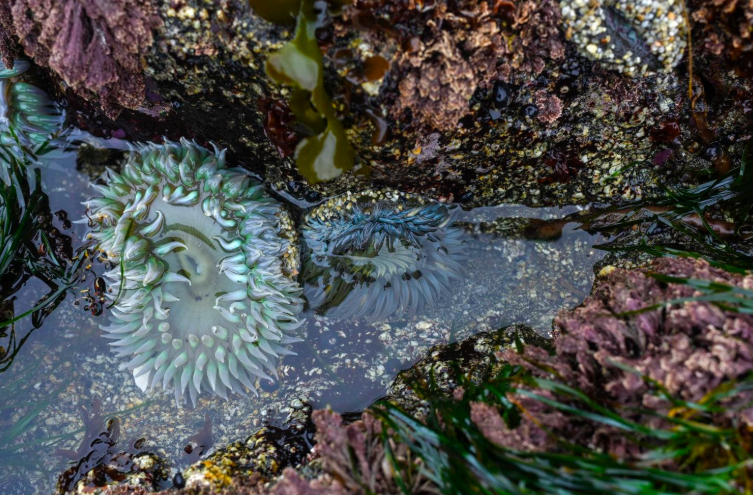
Giant green and starburst anemones. Photo: Michael Robinson Chavez, The Washington Post
The Pacific Coast of Northern California is finding a new sort of climate refugee washing up on its shores and inhabiting its bays and coastal waters — species that have shifted their migratory patterns and habitat due to warming ocean waters throughout the Pacific. According to The Washington Post, scientist attribute these weird new sitings to two specific forces — warming Arctic waters that spread farther south than usual five years ago and then an El Niño two years ago that further warmed the water on the Coast — and together they formed “an ocean heat wave whose real-time and lingering effects may have permanently scrambled California’s coastal ecosystem.” What are some of the impacts today? The Post reported that,
- Non-native species such as starburst anemones, a species found commonly in Mexico, are gradually killing off the native giant green anemones.
- Five times as many whales have been seen in San Francisco Bay as in a normal year, and they are staying much longer too — more than a month. And in a first, there a grays and humpback whales can be seen in the Bay at the same time — both usually do not linger there but instead swim by quickly on their way to their Bering Sea feeding grounds.
- A hoodwinker sunfish washed ashore last month in Santa Barbara — no one has seen one of these fishes in the Northern Hemisphere for more than a century.
In a report in Nature last month, researchers cataloged the weird and unusual sightings — they identified 67 marine species that are now pushing the northern boundary of their commonly known habitat, and of those, 37 species were landing in northern coastal areas they had never been seen in before. The scientists conducting the research believe that some of those species have settled in and will stay in their new northern home. The changes are not all good — whales are migrating closer to the coastline in search of food, but this has increased the risk that they will be hit by ships or entangled in fishing gear — 11 have been killed so far this year. Also concerning is the number of skinny gray whales they are seeing — climate change may be pushing their food source, krill, outside of their migration routes.
Why This Matters: The bottom line is that these prolonged marine heatwaves and the resulting dispersal of warm ocean water are causing long-term shifts in the composition of animal communities in coastal northern California. The entire ecosystem is transforming in a very short period of time. This is yet more evidence that climate change has already started to impact us in marked ways we can observe today. And it has only just begun. The more the waters warm, the more scientists expect to see additional tropical species migrating farther north than ever before.
To Go Deeper: Read the entire Post story and enjoy the beautiful photos.
April 18, 2019 » anemones, climate change, migration, ocean warming, Pacific, whales


